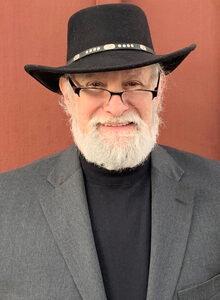Addiction can occur in many forms. Often, it is assumed that physical dependence, characterized by withdrawal symptoms, is required for someone to be diagnosed with an addiction disorder, but the fact is that behavioral addiction can occur with all the negative consequences in a person’s life minus the physical issues faced by people who compulsively engage in drug and alcohol abuse.

Process Addictions are defined as behavioral problems that involve a lessening of control, persistent seeking, and significant harm even though no addictive substance is involved. According to the International Journal of Preventative Medicine, behavioral science experts believe that anything capable of stimulating a person can be addictive; and when a habit changes into a compulsion, it can be considered as an addiction. Researchers also believe that there are several similarities between drug addiction and behavioral addiction diagnostic symptoms, except that the individual is not addicted to a substance, but to the behaviors or the feelings brought about by the required action. In addition, the physical signs of drug addiction may be absent, but behaviorally addicted individuals will undergo the same consequences brought about by addiction to alcohol and drugs as well as exhibiting other obsessive behaviors.
The Diagnostic and Statistical Manual of Mental Health Disorders, aka the DSM-5-TR, published by the American Psychiatric Assn (APA), lists 300+ mental and behavioral health diagnoses accepted in the US, and a few other countries, but recognizes gambling as the only process addiction. While the DSM does acknowledge numerous unusual sexual behaviors under the general heading of Paraphilias (discussed in detail later), the APA does not recognize various Compulsive Sexual Behaviors as mental heath disorders per se, despite the vast amount of research and evidence that provides compelling support for such a diagnosis.
Aside from the DSM, most of the world relies on the ICD, or International Classification of Diseases, published by the World Health Organization (WHO), as the official book of mental and behavioral diagnoses, and the WHO has chosen to include Compulsive Sexual Behavior Disorder (CSBD) in their recently published 11th edition, the ICD-11. With a designated code of 6C72, CSBD, is described as the inability to control sexual behavior despite negative consequences. With this decision, the world’s health experts have determined that such behaviors merit an official diagnosis. The disorder is also known as Hypersexuality and Sex Addiction.
In their policy statement, the Society for the Advancement of Sexual Health (SASH) states that having reviewed the available evidence, there are several diagnostic models currently under investigation, all of which reflect an underlying clinical condition requiring dedicated assessment, and treatment. Sexual Addiction and Pornography Addiction are two such models. Additional models include Hypersexual Disorder, Out of Control Sexual Behavior, Unspecified Impulse Control Disorder, and Sexual Compulsivity, amongst others. A growing body of empirical research supports the serious clinical concerns on which these various models seek intervention. Among this empirical evidence are dozens of studies supplying neuroscience evidence consistent with the presence of addiction, primarily in Internet pornography users, but also in “sex addicts” generally. There is research evidence that also supports other diagnostic labels, such as Hypersexual Disorder.
SASH also notes that the preponderance of the recent neuroscience research points to substantial evidence of addiction-related brain changes in Internet pornography users. This also appears to be an outgrowth of the relatively new technology-saturated environment. Numerous researchers have found that streaming pornography is potentially addictive, and may help to explain a surge in non-organic, psychogenic sexual dysfunctions and abnormally low sexual desire in some users, whether or not they are addicted.
Not all forward-thinking organizations dedicated to the advancement of enlightened sexuality agree with SASH’s findings, or the World Health Organization’s decision to include Compulsive Sexual Behavior Disorder in the ICD-11. In their official policy statement on Sex Addiction, the American Association of Sexual Educators, Counselors and Therapists (AASECT) recognizes that people may experience significant physical, psychological, spiritual, and sexual health consequences related to their sexual urges, thoughts or behaviors. However, AASECT recommends that its members utilize models that do not “pathologize” consensual sexual behaviors. In addition, AASECT does not agree that sufficient empirical evidence has been found to support the classification of sex addiction or porn addiction as a mental health disorder, and they do not find that the current sexual addiction training and treatment methods, and educational pedagogies, are adequately informed by accurate human sexuality knowledge. Therefore, it is the position of AASECT that linking problems related to sexual urges, thoughts or behaviors to a porn/sexual addiction process cannot be advanced as a standard of practice for sexuality education, counseling, or therapy.
As for the core issues underlying this discussion, pornography appears to be one of the major drivers behind the designation of Compulsive Sexual Behavior as an addiction. Pornography has been around as long as humans have created art. The word is derived from porni – meaning prostitute, and graphein – to write, meaning any work of art of literature that depicted prostitution. A carved limestone figurine of a woman whose breasts and hips have been exaggerated to emphasize her fertility– known as the Venus of Willendorf — has been dated c. 25,000 BCE, and several similar ivory fertility figurines have been dated even earlier. Thousands of explicit erotic figures were carved on the walls and columns of Indian temples before 1000 AD, and a tradition of intricately detailed sexually themed art prints and ivory figures were created in Japan beginning around 700 AD. Fast forward to the era of French postcards, which began around the late19th Century, usually showing suggestive or explicit images of women in various stages of nudity, with or without paramours. The 1920’s – 1940’s was the heyday of the so-called Tijuana Bibles, little booklets, cheaply printed on pulp paper and featuring sexually based send-ups of popular comic characters, such as Betty Boop and Popeye. This was also an era of pin-up magazines, so called because the images were meant to be cut out and pinned up on the wall. By the 1950’s, advances in inexpensive 8mm movie making and projection equipment created an explosion of amateur pornographic films that were sold though an underground network of distributors.
In America, pornography was illegal from 1873- 1957 under the Comstock Act, after which Roth vs. the US redefined pornography and made it legal, except for material depicting children. This led to a proliferation of so-called nudie magazines, notably Playboy, and by the late 70s, the heat had been turned up considerably with more explicit imagery in periodicals like Hustler and Penthouse. This also coincided with advancements in inexpensive home video equipment which led to a veritable flood of amateur pornography, in addition to much slicker productions, eventually giving rise to the multi-billion-dollar porn industry we have now, worth over $100 billion annually.
In the US today, well over 60% of men and 40% of women consume pornography online each month. About 50% of all Internet traffic is related to sex. According to the Journal of the American Medical Association, Psychiatry Division about 200,000 Americans maybe classified as porn addicts, 40 Million Americans regularly visit porn sites, every second 2.5 Billion Emails containing porn are sent or received, and 25% of total Internet searches are related to pornography. This is a mass phenomenon that has had a profound effect on our society, especially for the uncounted individuals who compulsively view this material. In addition, there are over 1500 online dating ‘hook-up’ sites with an estimated 60 million regular users. Clearly, there’s a lot of non-marital sex going on. How many of these customers could be diagnosed with Hypersexuality?
Of course, not all consumers of porn, or customers of dating apps, exhibit Compulsive Sexual Behavior Disorder, but as can be attested by numerous therapists in private practice, as well as those who work in addiction clinics, such as American Addiction Centers, the rise of this phenomena has been dramatic and significant over the past decade or so.
According to the Mayo Clinic, some signs that one may have compulsive sexual behavior include:
- Having repeated and intense sexual fantasies, urges, and behaviors that take up a lot of time and feel as if they’re beyond one’s control.
- Feeling driven or having frequent urges to do certain sexual behaviors, feel a release of the tension afterward, but also feel guilt or deep regret.
- Trying without success to reduce or control sexual fantasies, urges or behaviors.
- Using compulsive sexual behavior as an escape from other problems, such as loneliness, depression, anxiety, or stress.
- Continuing to engage in sexual behaviors despite them causing serious problems. These could include the possibility of getting or giving someone else a sexually transmitted infection, the loss of important relationships, trouble at work, financial issues, or legal problems.
- Having trouble making and keeping healthy and stable relationships.
A final word regarding Paraphilic Disorders, which were mentioned earlier. The DSM defines 8 types of these conditions, including pedophilia, exhibitionism, voyeurism, sexual sadism, sexual masochism, frotteurism, fetishism, and transvestic fetishism – however these 8 categories include over 300 different variations, some of them quite dangerous for both the paraphilic individual, and for anyone who they may become fixated upon. Some dangers may include possible lethal outcomes for one or both parties. There is no doubt that some of the very graphic pornographic material available will feed into the more dangerous of paraphilic sexual obsessions, and an official, recognized diagnosis that includes compulsive porn viewing may help to promote better treatments for such individuals.
Dr. Gene Ira Katz, DMCJ, DABS, LAC, LPCC, is Executive Director of Positive Pathways Institute. Contact Dr. Gene Ira Katz at geneirakatz@yahoo.com or 720-339-8174 (leave confidential message). Learn more about Dr. Katz here.







